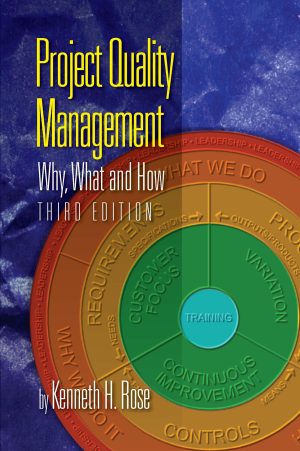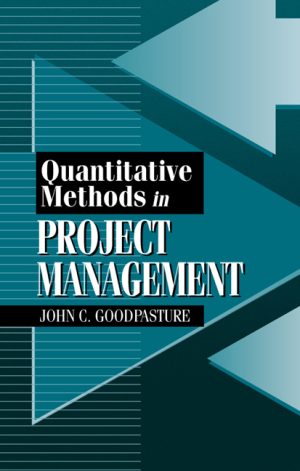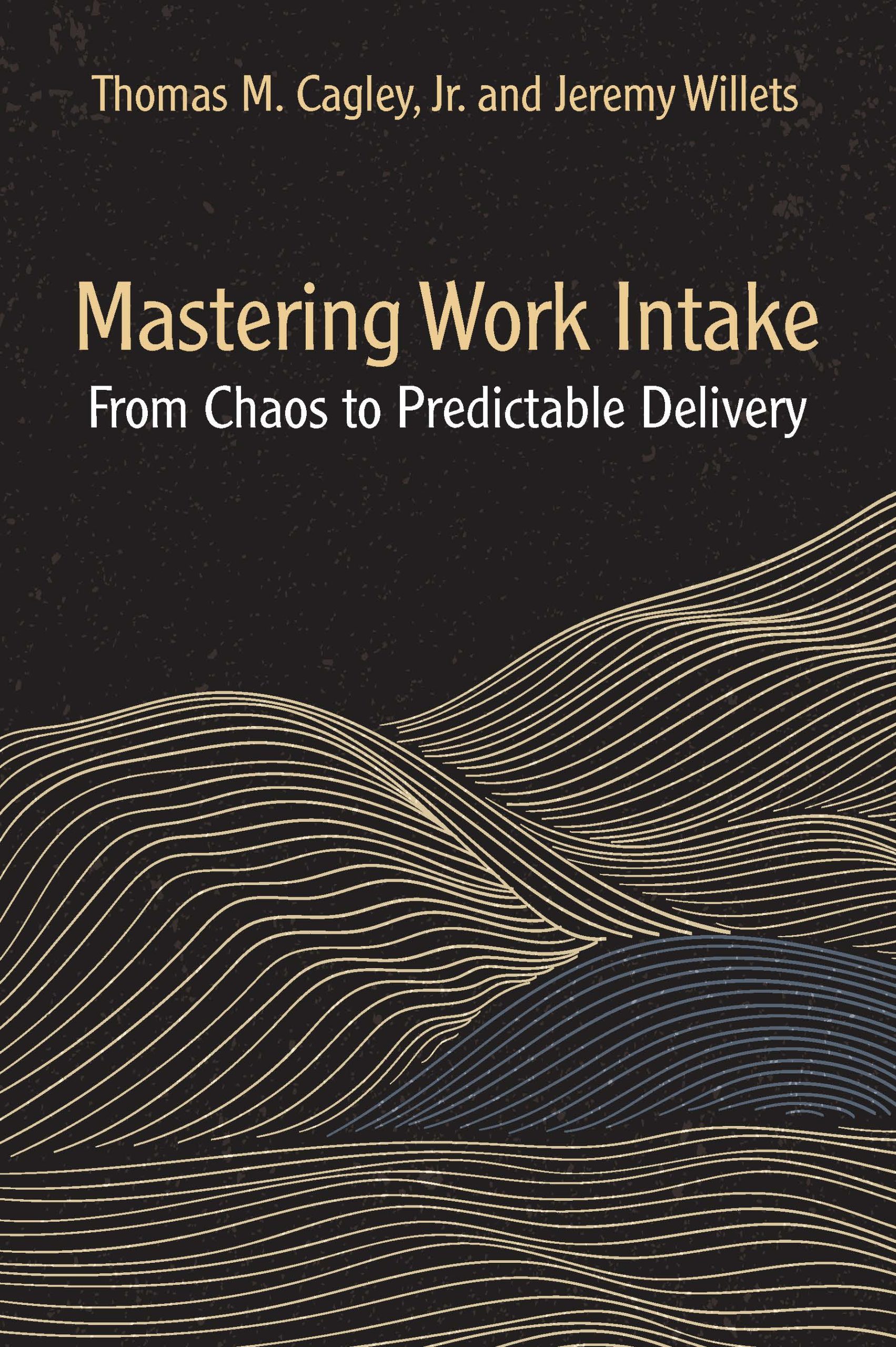Mastering Work Intake
$44.95
From Chaos to Predictable Delivery
By Thomas M. Cagley, Jr. and Jeremy Willets
Softcover, 6×9, 298 pages
ISBN: 978-1-60427-200-0
e-ISBN: 978-1-60427-853-8
January 2024
Description
Regardless of whether you’re creating, enhancing, or maintaining software products, work intake is a challenge you deal with constantly. Doing the right work at the right time can make or break your project, and there are surprisingly few resources to show you how to manage this process effectively. You need to know what your team is executing, what work is next, and the skill sets required to do the work.
Mastering Work Intake: From Chaos to Predictable Delivery focuses on the full pipeline that work follows as it enters and exits your organization, including the different types of work that enter at different levels and times. It is a must-read for agile coaches, Scrum Masters, product owners, project and portfolio managers, team members, and anyone who touches the software development process. Mastering work intake involves recognizing that it’s easy to say “yes” and much harder to say “no.”
Key Features
- Combines theory with decades of practical experience in an easy-to-read format that describes how to take on the biggest challenge to teams and organizations today—work intake
- Helps readers diagnose and then solve problems themselves to deliver what work is needed when it’s needed
- Illustrates how each level of an organization handles work intake and how roles interact throughout the process
- Details why the middle level of an organization’s control over work intake is the most detrimental to getting value from agile
- Effectively describes sequencing, an often-overlooked part of the work intake equation
- Enables readers to measure work intake and flow so that the right work gets done at the right time
- WAV offers facilitated exercises to help you formulate ideas to address work intake challenges in your context and instructional material for classroom use (lecture slides, exercise solutions, etc.)—available from the Web Added Value™ Download Resource Center at www.jrosspub.com/wav
About the author(s)
Thomas M. Cagley, Jr. is a consultant, speaker, author, coach, and agile guide who leads organizations and teams to unlock their inherent greatness. He has developed estimation models and has supported organizations developing classic and agile estimates. Tom helps teams and organizations improve cycle time, productivity, quality, morale, and customer satisfaction, and then prove it.
Tom is an internationally respected blogger and podcaster for over 11 years, focusing on software processes and measurement. His blog entries and podcasts have been listened to or read over a million times. He co-authored Mastering Software Project Management: Best Practices, Tools and Techniques with Murali K. Chemuturi. Tom penned the “Agile Estimation Using Functional Metrics” chapter in The IFPUG Guide to IT and Software Measurement. His certifications include SAFe® Practice Consultant (SPC) and CSM.
Tom can be found at tomcagley.com.
Jeremy Willets is a coach, speaker, and author who has spent the last decade working with people and teams to achieve greatness in the workplace. He started out as a technical writer on a Scrum team and quickly fell in love with Scrum and the Agile Manifesto values and principles. Since then, he’s served thriving organizations as a Scrum Master, agile coach, senior agile coach, release train engineer, people manager, and mentor.
Jeremy has spoken at conferences throughout the midwestern United States. He’s an avid Substack blogger and music maker. He holds a SAFe® Practice Consultant (SPC) certification.
Jeremy can be found at jeremywillets.com.
Table of Contents
Section One – Work Intake
Section One Introduction
Chapter 1: What is Work Intake?
A Simple Example of Work Intake in Scrum
Work Intake and Agile
End-of-Chapter Questions
Chapter 2: What Does Good Work Intake Look Like?
Introduction
Nine Core Principles
End-of-Chapter Questions
Chapter 3: Basics of Work Intake
Push vs. Pull
Story-Driven vs. Interrupt-Driven
Utilization Maximization Fallacy
Flow
The Happy Path
End-of-Chapter Questions
Chapter 4: Who Cares About Work Intake?
Executives
Customers
Internal Stakeholders
End-of-Chapter Questions
Chapter 5: Three Levels of Work Intake
Organization Level Work Intake
Middle-Level Work Intake
Team Level Work Intake
Hierarchy and Fatalism: A Caution
End-of-Chapter Questions
Chapter 6: Work Intake Anti-Patterns: When Work Intake Goes Wrong
Disrupted Work
Everything Else is Late
Reduced Trust
Leadership and Trust
Lack of Safety
Everything is Started, Nothing is Done
Herding
End-of-Chapter Questions
Section One Conclusion
Section One Introspection
A Work Intake Case Study as a Business Novella, Chapter 1
Executing New Ideas
Section Two – Work Intake Basics: Prioritization and Sequencing
Section Two Introduction
Chapter 7: Prioritization
Priority
Why We Prioritize
What is a Priority?
End-of-Chapter Questions
Chapter 8: The Who, When, and How of Prioritization
Who Participates in Prioritization
When to Prioritize
How to Prioritize
End-of-Chapter Questions
Chapter 9: Prioritization at All Three Levels
Prioritization and Work Intake
End-of-Chapter Questions
Chapter 10: Prioritization Anti-Patterns
“I can’t prioritize between these items.”
“That’s a high priority.”
“What’s the next thing on the priority list?”
“Everything is a high priority.”
Prioritization Anti-Patterns Conclusion
End-of-Chapter Questions
Chapter 11: Sequencing
Why We Sequence
What is Sequencing?
End-of-Chapter Questions
Chapter 12: The Who, When, and How of Sequencing
Who Participates in Sequencing
When to Sequence
How to Sequence
End-of-Chapter Questions
Chapter 13: Sequencing at All Three Levels
Sequencing and Work Intake
Approach to Sequencing
End-of-Chapter Questions
Chapter 14: Sequencing Anti-Patterns
“That work isn’t in our backlog of product work. It’s in our backlog of technical work.”
“That’s not on our backlog.”
“We’re going to need to do that work eventually, so let’s just do it now.”
End-of-Chapter Questions
Chapter 15: Prioritization and Sequencing — Related but Different
End-of-Chapter Questions
Section Two Introspection
A Work Intake Case Study as a Business Novella, Chapter 2
Executing New Ideas
Section Three – Work Intake Visualization: Metrics That Matter
Section Introduction
Chapter 16: Flow
Defining Flow
Why a Definition is Important
Four Common Attributes of Flow
End-of-Chapter Questions
Chapter 17: Flow Metrics
Introduction
Flow Metrics Basics
Basic Metrics of Flow
End-of-Chapter Questions
Chapter 18: Flow Metrics Palette
Dashboard Metrics
End-of-Chapter Questions
Chapter 19: Flow Metrics at All Levels
Organization
Middle Management
Team
End-of-Chapter Questions
Chapter 20: Metrics Anti-Patterns
Story Points (As Throughput and/or Velocity Measures)
Measuring Individuals
Team vs. Team
The Data is the Whole Story
Measuring Everything (or Nothing)
Inconsistent Measurement Definitions
Measuring Hours (and Estimating in Time)
Measuring the Wrong Thing (And Believing It’s Right)
Metrics Fire Drills
Local Optimization
The “Tragedy of the Commons”
Time vs. Productivity
End-of-Chapter Questions
Section Three Introspection
A Work Intake Case Study as a Business Novella, Chapter 3
Executing New Ideas
Section Four – Work Intake Problems and Solutions
Section Introduction
Chapter 21: The Primary Causes of Work Intake Problems
Cause #1: Goal Conflict
Cause #2: Need Outstrips Supply
Cause #3: Pay Practices
Cause #4: Project Thinking vs. Product Thinking
Cause #5: Urgency/Importance Dichotomy
Cause #6: Classes of Service
Cause #7: Control
Cause #8: “Yes-itis”
A Final Word on Causes
End-of-Chapter Questions
Chapter 22: Fixing the Primary Causes of Work Intake Problems
Fix #1: Staffing Levels
Fix #2: Alignment
Fix #3: Change the Methods of Working
Fix #4: Acquiring Capabilities
Fix #5: Culture
A Final Word On Fixes
End-of-Chapter Questions
Chapter 23: Why Middle Management Can Be “Mushy”
What is the Middle?
Who is Active in the Middle?
Work Intake in the Middle
End-of-Chapter Questions
Chapter 24: Middle Management Anti-Patterns: Competing Interests
Hierarchical Interests
Technical Interests
Product Interests
Process Interests
Meta Antidote
End-of-Chapter Questions
Chapter 25: When Work is Done
Work Acceptance Anti-Patterns
End-of-Chapter Questions
Section Four Introspection
A Work Intake Case Study as a Business Novella, Chapter 4
Executing New Ideas
Afterword
Index
You may also like…
-

Project Quality Management, Third Edition
Retail Price: $44.95$39.95 Add to cart -

Mastering Software Project Management
Retail Price: $59.95$54.95 Add to cart -

Software Engineering
Retail Price: $99.95$89.95 Add to cart -

Metrics-Driven Enterprise Software Development
Retail Price: $69.95$59.95 Add to cart
Related products
-

Risk Management for Project Driven Organizations
Retail Price: $54.95$44.95 Add to cart -

Handbook of Integrated Risk Management for E-Business
Retail Price: $89.95$69.95 Add to cart -

Directing the Flow of Product
Retail Price: $59.95$49.95 Add to cart -

ROI of Software Process Improvement
Retail Price: $59.95$49.95 Add to cart -

Quantitative Methods in Project Management
Retail Price: $64.95$59.95 Add to cart




